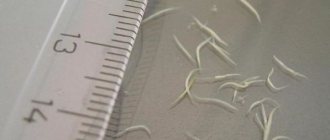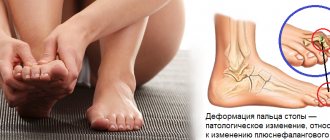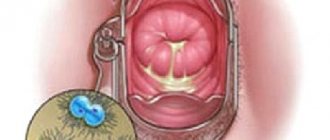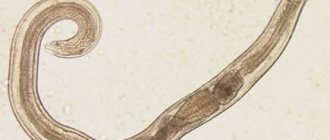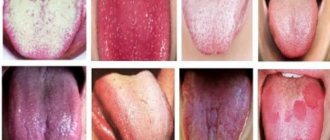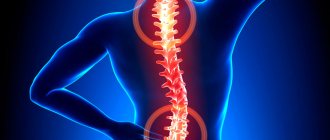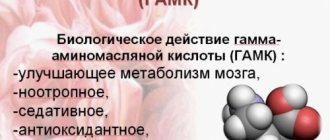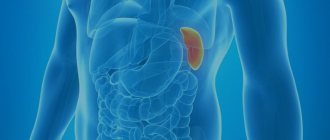Infectious disease specialist
Sinitsyn
Olga Valentinovna
33 years of experience
Highest qualification category of infectious disease doctor
Make an appointment
The most common type of helminthiasis in the world is enterobiasis. This disease is caused by intestinal parasites - pinworms, which settle in the small intestine of a person, provoking a variety of intestinal and toxic-allergic disorders. In Russia, it accounts for up to 70% of all cases of human helminthiasis. A characteristic feature of this type of helminthiasis is the passage of the full cycle of development of the parasite in the host’s body.
Content
- The causative agent of parasitic infection is pinworm
- Causes of pinworm infection
- What complications does the disease cause?
- Symptoms of the disease Acute period
- Chronic stage
Enterobiasis is an infection of the body with helminths - pinworms. Young children are at risk, but children of other ages can also be infected.
Ways of infection with ascariasis
The main difference in infection mechanisms is that the eggs mature in different environments. For pinworms, these are the folds of the perianal zone of an infected person. From here they enter the mouth and then the intestines of the same person. Or into another person's mouth and intestines.
The method of infection by roundworms is determined by the fact that in order for their eggs to mature, they need to lie in the soil. Leaving the human intestines along with feces, the embryos of the parasite end up in the ground. After lying there at a certain temperature (1336 C) and humidity (not lower than 4%), they become ready for invasion. The optimal temperature for eggs is 24 C, at which maturation occurs in two weeks.
This method of infection is called fecal-oral. Eggs are capable of infecting humans only after they have remained and matured in the ground.
The principles of infection with roundworms in humans can be different.
- When eating thermally unprocessed food.
- When eating poorly washed fruits and vegetables.
- Drinking raw, unboiled water from open reservoirs and water pipes.
- When swimming in open waters.
- From pets that have parasite germs on their fur.
- From flies and other insects. Crawling on uncovered food, they infect it.
- Upon contact with things and interior elements that could somehow get worm eggs.
Contributes to parasite infection:
- working with soil in the garden and vegetable garden, especially if feces are used to fertilize them;
- improperly constructed cesspools in private farmsteads.
The causative agent of parasitic infection is pinworm
Enterobiasis is caused by the pinworm parasite. This helminth is a roundworm belonging to the class of nematodes. It has some features in appearance. Females grow to a length of 9-12 mm, they have a “tail” - a pointed end. It severely injures the intestinal mucosa when the worm is in the body. Males are 2-3 times smaller than females, and their “tails” are curved in a spiral. Source: https://www.ncbi.nlm.nih.gov/pmc/articles/PMC2306321/ JP Caldwell Pinworms (Enterobius Vermicularis) Can Fam Physician. 1982 Feb; 28: 306–309.
Adult helminths live in the cecum and at the end of the small intestine. At night, females crawl out of the cecum through the anus. At this time, the person’s anal sphincter is relaxed, so nothing interferes with the worms. When the female pinworm emerges, she lays eggs in the perianal folds. There are a lot of eggs - up to 15 thousand. Having laid them, the female dies. The entire cycle of her life is about a month. The eggs are resistant to environmental factors and can remain viable for up to 3 weeks. They stain clothes and bedding.
After a few hours, the embryo from the egg becomes a larva, which itself begins to parasitize. This is how enterobiasis spreads. Pinworms can penetrate the thickness of the intestinal mucosa, causing the formation of granulomas. Sometimes worms crawl into the vagina, uterus and ovaries. Because of this, the female organs become inflamed.
Diagnostics
To establish a diagnosis of enterobiasis, several diagnostic methods are used:
- Identify key symptoms: itching at night, loss of appetite, weakness.
- Analysis of stool for pinworm eggs. This method is not informative enough. Therefore, other methods are additionally used.
- Scraping in the anal sphincter area. To do this, scrape off the contents of the area near the anus with a cotton swab.
- Imprint of the anal sphincter area. This method uses adhesive tape, which is glued to this area, then glue the tape onto glass and look under a microscope.
Tests should be done at least 2 times for a more accurate result, with an interval of 2 weeks.
What complications does the disease cause?
When the parasite attaches to the intestinal wall, it secretes a harmful secretion and damages the mucous membrane. In the latter case, poorly healing ulcers form and hemorrhages occur. If tissues are deeply damaged, inflamed granulomas appear. They consist of abnormally overgrown cells, lymph and blood. Due to the fact that pinworms injure the intestines, children experience abdominal pain. The microflora is disrupted and dysbacteriosis occurs.
When the female crawls out, she damages the soft tissue. The perianal area is irritated by the secretion of the worm - abrasions, cracks, eczematous rash, and neurodermatitis appear. If the helminth penetrates the genitals of girls, endometritis and other gynecological diseases may develop.
In the presence of pinworms the acidity of the stomach decreases , food is digested worse, and the course of intestinal diseases becomes more complicated . Parasites reduce immunity, because of them the effectiveness of vaccinations decreases and the number of side effects from them increases. Medicine knows of cases where pinworms pierced the rectum and entered the abdominal cavity, followed by peritonitis.
Being in the organs of the gastrointestinal tract, parasites cause the following complications:
- inflammation of the pelvis and peritoneum;
- acute skin lesions in the perirectal area;
- stagnation of feces in the cecum;
- pyoderma;
- anemia;
- developmental delay of the child;
- disturbance of appetite and sleep; Source: R.A. Fayzullina, E.A. Samorodnova, V.M. Dobrokvashina Helminth infections in childhood // Practical Medicine, 3(42) May 2010.
- in girls – cystitis, vulvitis;
- in boys - enuresis;
- anal fissures.
Manifestations of ascariasis
The development cycle of these worms is about 3 months. This period is the incubation period of the disease. Clinical symptoms of ascariasis are varied. They include:
- the appearance of a rash;
- skin itching;
- slight increase in body temperature;
- decreased appetite;
- nausea;
- flatulence;
- abdominal pain;
- hypersalivation;
- drowsiness;
- weakness;
- irritability.
In severe cases of ascariasis, signs of intestinal obstruction are possible: pain, bloating, constipation. In some cases, adult helminths can be excreted in the feces. Less commonly, ascariasis affects other organs. If roundworms are localized in the eye, oculomotor disorders and hemorrhages are formed. With pulmonary localization, suffocation may occur.
Symptoms of the disease
There are many signs that a child is infected with pinworms. However, not all of them are characteristic of this disease. Therefore, children are often treated for colitis or gastritis. If there are few parasites in the body, then there may be no symptoms at all. If the disease continues for a long time, anemia occurs , the condition of nails, hair, skin worsens, and the corners of the mouth crack.
Enterobiasis has an incubation period of 1-1.5 months . The “brightness” of the clinical picture depends on the strength of the immune system and the number of worms.
There are two types of disease - acute and chronic. Everyone has their own symptoms.
Acute period
Most often, nausea, abdominal discomfort, weakness in the morning, and frequent stools occur, although they are well formed.
Chronic stage
From the moment of infection to the chronic stage, 1-2 months pass. Symptoms may remain the same as in the acute form or worsen. The main manifestations of chronic enterobiasis:
- flatulence;
- itching in the anus, which becomes stronger at night, it lasts 4-5 days, then disappears and appears again after 2-3 weeks;
- heaviness and pain in the epigastric region;
- insomnia;
- enuresis at night;
- irritability;
- increased fatigue;
- neurological symptoms - problems communicating with peers, deterioration of memory, attention, isolation, headache.
Nutrition
To increase the anthelmintic effect of medications and folk remedies, it is recommended to reduce the load on the digestive system as much as possible. To do this, follow a light diet. It is recommended to exclude sweet and flour products, fried and fatty foods from the diet. You can eat dairy products and drink freshly squeezed juices.
It is allowed to eat porridge and light soups with a small amount of potatoes. It should be remembered that following a diet during treatment for pinworms enhances therapy and improves the general well-being of the patient.
Treatment methods for detecting pinworms in a child
To treat enterobiasis, the doctor prescribes anthelmintic drugs. The dosage is determined according to the age and weight of the patient. It must be remembered that all these drugs are highly toxic and can cause adverse reactions. Pediatricians do not recommend choosing medications without consulting a specialist.
If a child is diagnosed with pinworms, then all family members need to undergo treatment. If there is a pet living in the house, it is also necessary to purchase anti-worm medication for it.
During treatment, it is also necessary to take sorbents, since anthelmintic drugs do not remove parasites from the body.
An effective regimen for taking medications and necessary procedures is prescribed by the doctor.
A number of hygiene procedures for the home are necessary:
- after the end of treatment, change the linen by ironing it with a hot iron;
- boil or wash the toys in hot water with added salt;
- Regularly carry out wet cleaning at home.
Vermox
This anti-worm medicine is available in tablets, and the active ingredient is mebendazole. “Vermox” is excreted in feces (and 10% by the kidneys) and is not absorbed through the intestinal wall. The drug against parasites is indicated for children from 3 years of age and adults. Acts on roundworms and nematodes, cestodes. It has no effect on parasite eggs, but suppresses larvae and adult worms.
Depending on your body weight, you need to take 2-4 tablets at once. The treatment lasts 3 days (so you will need to buy several packages of Vermox). During treatment, you should avoid fatty foods, alcohol and laxatives.
Vermox
Gedeon Richter, Hungary
— enterobiasis;
- ascariasis; — hookworm disease; — strongyloidiasis; - trichocephalosis; - trichinosis; - taeniasis; — echinococcosis (if surgical treatment is not possible); - mixed helminthiases. from 86
726
- Like
- Write a review
Read also: Top 5 best sorbents for poisoning Rating of the most effective and safe sorbents that help with poisoning and hangover syndrome.
Disease prevention
To prevent a child from becoming infected with parasites, he needs to instill personal hygiene skills and ensure that:
- his nails were trimmed;
- he had no contact with street animals;
- did not put dirty objects into his mouth. Source: Clinical recommendations (treatment protocol) for providing medical care to children with enterobiasis, Federal State Budgetary Institution Scientific Research Institute of Infectious Diseases, Federal Medical and Biological Agency of Russia, Public organization "Eurasian Society for Infectious Diseases", Public organization "Association of Infectious Disease Doctors of St. Petersburg and the Leningrad Region" (AVISPO)
If you suspect enterobiasis in a child, you should consult a doctor as soon as possible and undergo a course of treatment. You can make an appointment with a medical pediatrician 24 hours a day by phone or leave a request to have a doctor come to your home.
Sources:
- https://www.ncbi.nlm.nih.gov/pmc/articles/PMC2306321/JP Caldwell Pinworms (Enterobius Vermicularis) Can Fam Physician. 1982 Feb; 28: 306–309.
- R.A. Fayzullina, E.A. Samorodnova, V.M. Dobrokvashina Helminth infections in childhood // Practical Medicine, 3(42) May 2010.
- Clinical recommendations (treatment protocol) for the provision of medical care to children with enterobiasis FGBU NIIDI FMBA RUSSIA, Public organization "Eurasian Society for Infectious Diseases", Public organization "Association of Infectious Disease Doctors of St. Petersburg and the Leningrad Region" (AVISPO)
Markova Daria Olegovna Clinic
Author of the article
Markova Daria Olegovna
Specialty: pediatrician
Experience: 14 years
The information in this article is provided for reference purposes and does not replace advice from a qualified professional. Don't self-medicate! At the first signs of illness, you should consult a doctor.
Folk remedies
You can get rid of pinworms not only with the help of traditional pharmaceuticals. Many people have long trusted products of natural origin. When used wisely, they can help with parasitic infections without producing toxic effects, like "chemistry".
Vegetables and seeds for the treatment of enterobiasis:
- Pumpkin seeds. If pinworms are found in adults, treatment at home must include pumpkin seeds. This tasty, satisfying, and, most importantly, effective medicine will help you quickly get rid of helminths. In order for pumpkin seeds to have a proper effect on pinworms, you need to eat at least 300 grams of seeds in one day.
- Seeds of watermelon. The seeds should be ground into powder. The resulting medicine should be added to a glass of water, 3 tablespoons each. and mix thoroughly. Take the drink for seven days, in the morning, one glass.
- Beet. The juice is prepared immediately before consumption. It is enough to squeeze 100 ml of red beet juice. It is drunk twice a day, morning and evening.
- Carrot. For treatment, use freshly squeezed juice (half a glass). To enhance the effect, add a few drops of vegetable oil. The juice is drunk in the morning, before meals.
Herbs to get rid of pinworms:
- Wormwood. A tablespoon of raw material is poured with boiling water (500 ml), left to cool. Take one teaspoon three times a day before meals.
- Oak and valerian. Valerian root and oak bark, taken in equal parts, are crushed, and the resulting raw material, in the amount of 1 tbsp. l., pour boiling water (250 ml). Leave for at least three hours. The drug is taken in the morning on an empty stomach. After one or two hours, eat a clove of garlic and drink three tablespoons of vegetable oil. The course of treatment is ten days.
- Tansy, wormwood and chamomile. The raw materials are mixed in equal parts, take 1 tablespoon of the mixture, pour a glass of boiling water and leave. The infusion is drunk twice a day for five days.
Other means:
- Some plant oils: pumpkin, hemp, flaxseed are excellent at fighting parasites. The oil should be drunk in the morning, on an empty stomach, in the amount of 1-2 tbsp. l.
- A recipe called “drunk worms” has gained particular popularity. To combat pinworms, you need to drink 50 ml of cognac in the morning on an empty stomach, wash it down with very sweet tea, and twenty minutes later drink 50 ml of castor oil. Please note that castor oil has a pronounced laxative effect, so you must stay at home on the day of the procedure.
- The anal area can be lubricated with zinc ointment. This drug has a viscous and sticky structure. The pinworms will simply stick to the ointment and will not be able to lay eggs.
- Vaseline ointment with essential oils can become an obstacle to egg laying. To prepare the product, you need to add two drops of tea tree, thyme and lavender oils to the Vaseline. Mix everything thoroughly and apply the ointment to the anus every evening.
Prices
| Name of service (price list incomplete) | Price |
| Online opinion of a pediatrician (SPECIAL) | 0 rub. |
| Appointment (examination, consultation) with a pediatrician, primary, therapeutic and diagnostic, outpatient | 1750 rub. |
| Consultation (interpretation) with analyzes from third parties | 2250 rub. |
| Prescription of treatment regimen (for up to 1 month) | 1800 rub. |
| Consultation with a candidate of medical sciences | 2500 rub. |
Epidemiology.
The source of invasion is a person suffering from enterobiasis (the period of egg release begins 12-14 days after invasion and continues until complete recovery). The transmission mechanism is fecal-oral. Infection occurs when infective eggs are ingested with food and water (food transmission) or when they enter the mouth from fingers and dust (household transmission). Eggs accumulate in large quantities on the perianal area, under the nails of patients, on underwear and bed linen , on household items, chamber pots, toys, carpets, in floor crevices, etc., on food, in soil, and can be spread by flies. The inhalation route is possible - with dust when cleaning the room, when shaking out bedding. This is due to the widespread occurrence of auto(re)invasion in enterobiasis, as a result of which the disease can drag on for a long time.

